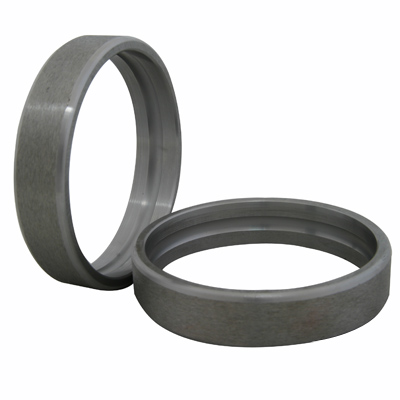Seamless ring forging process
Seamless ring forging is a process used to manufacture continuous, defect-free metal rings with a desired diameter and cross-sectional shape. This manufacturing method is critical in producing high-quality rings that can withstand intense stress and perform well in demanding applications such as aerospace, automotive, and heavy machinery components.
Here is a step-by-step overview of the seamless ring forging process:
1. Raw Material Selection:
The process begins with selecting an appropriate material, such as steel, titanium, aluminum, or a specific metal alloy. Considerations for material choice include the intended application, desired mechanical properties, and compatibility with the planned forging process.
2. Billet Preparation:
The chosen material is cut to size and formed into a cylindrical preform (billet) that will be the starting point for the seamless ring forging process. This preform typically has a slightly larger diameter and length than the required ring to account for possible material loss during forging.
3. Billet Heating:
The preform is heated in a furnace to reach its forging temperature, which depends on the material. Achieving this temperature ensures the billet becomes malleable and workable without cracking or experiencing excessive stress during the subsequent forging steps.
4. Pre-forming and Piercing:
Now that the billet is at optimum forging temperature, it is pre-formed and pierced, creating a central hole in the doughnut-shaped material. This can be accomplished using forging presses or a rotary piercing machine, depending on the material properties and desired ring size.
5. Ring Rolling:
The doughnut-shaped preform, now with a central hole, is placed in a ring rolling machine. The machine consists of several main components, including the main roll, mandrel roll, axial rolls, and idle roll, among others. During the ring rolling process:
a) The mandrel roll is inserted through the center hole of the preform.
b) The axial rolls on either side of the preform force it against the main roll.
c) The radial force provided by the main roll, along with the axial force from the axial rolls, causes the ring to expand while maintaining its cross-sectional shape.
d) As the ring expands, its internal diameter is controlled by the mandrel roll. The axial rolls control the height of the ring, while the idle roll moves radially inward to maintain the final geometry.
6. Cooling and Trimming:
After the seamless ring has reached the desired dimensions, it is removed from the ring rolling machine and allowed to cool. This controlled cooling process prevents residual stress or warping in the ring. Once cooled, any excess material or flash is trimmed, and the ring is prepared for any necessary secondary processes.
7. Secondary Processes:
Depending on the specific application and requirements, the ring may require further heat treatment, machining, or surface finishing to achieve desired mechanical properties, dimensional tolerances, or surface quality.
8. Inspection and Quality Control:
Lastly, the forged seamless ring is thoroughly inspected through various testing methods such as dimensional checks, material composition analysis, and mechanical property testing to ensure conformance to design specifications and quality standards.
The seamless ring forging process results in a high-quality metal ring with improved strength, fatigue resistance, and durability, making it suitable for various applications like gears, flanges, bearings, and other high-performance components.






